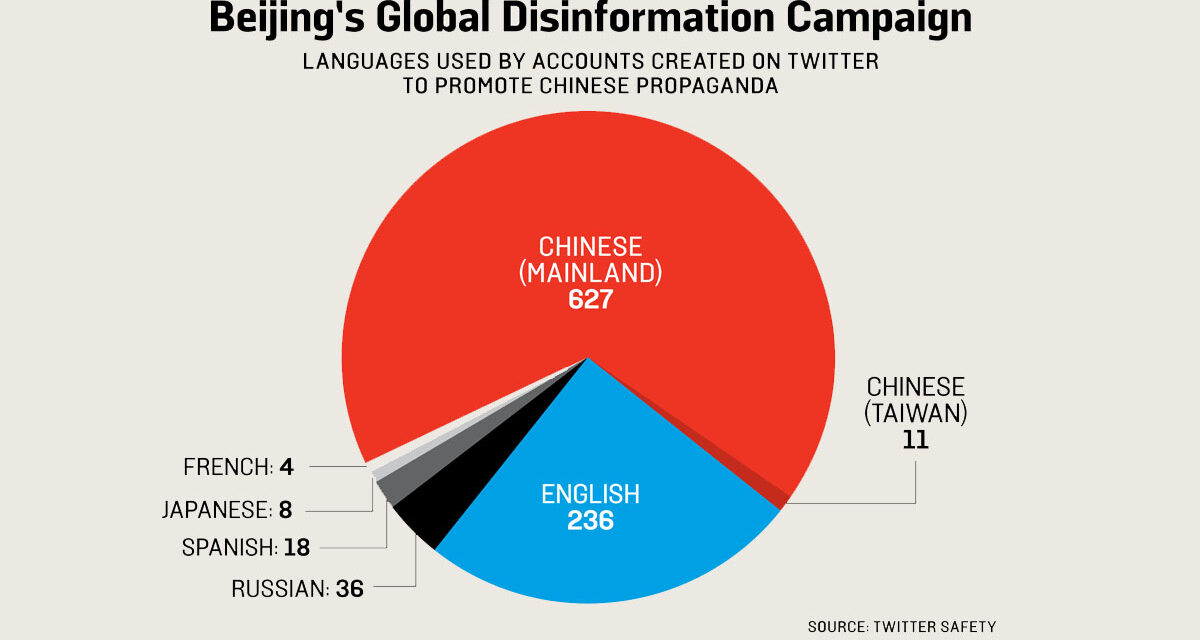
U.S. Passes $1.6 Billion Bill to Counter China’s Disinformation

In an era where global perceptions can be shaped with the tap of a keyboard, the U.S. is stepping up efforts to combat disinformation, especially from nations like China. While China’s multi-billion dollar propaganda campaigns have sought to reshape global perspectives in its favor, the U.S. government has passed HR 1157, allocating $1.6 billion to counter this growing threat. This new legislation aims to address the strategic spread of falsehoods by China’s state-run media and disinformation campaigns that distort critical global narratives, from infrastructure projects to political influence.
The Disinformation Challenge
China’s Belt and Road Initiative (BRI), a massive global infrastructure campaign, has often been marketed as a win-win for developing countries. However, critics have raised concerns about the debt traps and undue political influence these investments can bring. To further complicate matters, China’s propaganda machine works overtime to promote the BRI as purely beneficial, hiding any downsides in a cloud of misinformation. This is where the U.S. steps in, aiming to expose the underbelly of China’s totalitarian government and its intentions for domination.
China’s disinformation efforts are extensive, from using fake news sites to deploying bot armies that flood social media with Beijing’s talking points. The recent State Department report revealed just how far-reaching these efforts are, influencing countries in Africa, Latin America, and beyond. China’s aim is clear: to present itself as a benevolent world leader while discrediting those who oppose its expansionist agenda.
Why the U.S. Effort Matters
The U.S. doesn’t just seek to spread its own narrative; it wants to ensure that the truth prevails globally. China’s influence operations often distort reality, portraying the nation as a hero of global development, while hiding the often predatory nature of its actions. For instance, Chinese-funded infrastructure projects can leave developing nations indebted, vulnerable, and politically beholden to Beijing.
The U.S., through the “Countering the PRC Malign Influence Fund,” intends to reveal the realities behind China’s investments and its broader geopolitical strategies. The goal is not to engage in propaganda (although propaganda in its academic description devolves to simple marketing) but to counter falsehoods with facts, empowering independent media and civil society in affected countries. This effort will highlight the potential pitfalls of relying too heavily on Chinese economic involvement, which often results in loss of sovereignty and increased dependency.
ACZ Editor: I once was in a briefing by Voice of America, and made a snarky comment about propaganda. Their response was that they had found that the best propaganda was the truth, and they never deviated from that.
Risks of Misinformation Backfiring
While the U.S. has a history of condemning foreign interference, HR 1157’s implementation does raise questions. One challenge is ensuring that American efforts remain transparent and do not mirror the same covert disinformation tactics used by China. If these programs lack transparency, there’s a risk that they could be seen as hypocritical or manipulative, undermining the credibility of genuine concerns about China’s activities.
Moreover, there’s a danger that the flood of U.S.-funded messaging could stifle authentic, grassroots opposition to Chinese influence. If local opposition to Chinese investments is viewed as being orchestrated by the U.S., it could discredit legitimate criticism. This is why it’s essential that U.S. initiatives focus on supporting factual reporting, not manipulation.
China’s Propaganda Machine: A Growing Threat
China’s disinformation campaigns are far from trivial. They are part of a broader strategy to control global narratives, whether by promoting false claims about COVID-19 origins or spreading disinformation about the war in Ukraine. As the U.S. steps up its efforts to counter these campaigns, it’s essential to recognize the scope and sophistication of China’s influence operations.
One alarming tactic used by China is “flooding,” where inauthentic content overwhelms search results and social media feeds, drowning out critical voices. China also leverages artificial intelligence (AI) to create and disseminate realistic but entirely false narratives, posing a significant challenge to the democratic values of free speech and open dialogue.
A Battle for the Future of Information
As the U.S. allocates $1.6 billion to counter China’s growing disinformation campaigns, it’s crucial to emphasize the importance of transparency and truth. The challenge is not just to combat propaganda but to ensure that facts prevail in the global marketplace of ideas.
China’s strategy of shaping perceptions through disinformation has proven effective in many developing nations, where Beijing has successfully promoted its image as a benevolent superpower. But by investing in independent media, promoting factual reporting, and revealing the full truth behind China’s actions, the U.S. can help protect global communities from falling prey to manipulation.
This is not just a battle between two superpowers but a fight to ensure that truth and transparency guide international discourse, and that disinformation, no matter where it comes from, is exposed for what it is.
This is likely not be enough, especially given that China is outspending us in this area, but its a start.



























Does it matter if the poor below or above the poverty line are registered to vote. If they are registered…
Actually, you are slightly off. SNAP benefits last from one month to three years, it's no forever Joe. I think…
"You’re ugly and your mother dresses you funny." Stop acting like a child. "We conservatives are not the heartless bas#$ds…
Bill, most of this fact-checks as lies and, frankly, being Frank, I can say the danger, being Danger, is that…
Got proof Joe. Because your opinions of me seem unfounded and full of bullshit. I was a in Senior Product…